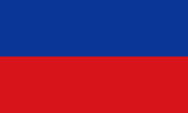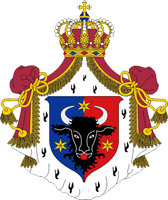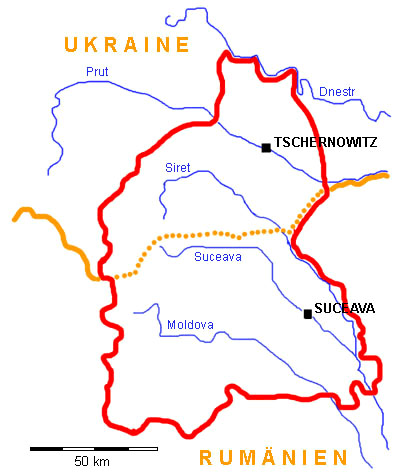mobile View, to the German Version tap the flag


- Bukovina (Bukowina, Buchenland)
- former Austrian crown land: Duchy of Bucovina, in the eastern Carpatian Mountains
- the north of Bukovina belogs today to Ukraine and the south to Romania
• Flag
• Meaning/Origin of the Flag
• Coat of Arms
• Meaning/Origin of the Coat of Arms
• Map of the former crown lands of Austria-Hungary (to 1918)
• Map of Bukovina
• Numbers and Facts
• History
• Origin of the Country's Name

Flag of the country (Colours of the country),
ratio = 2:3,
Source, by:
Flags of the World





In the time of the monarchy, the country had – like all the other crown lands of the Austrian crown – its own colours (Landesfarben), which were used amongst others on horizontally two- or three-striped flags. The colours (Landesfarben) were very often taken from the respective coat of arms of the country or were supplemented by another colour, which not appears in the coat of arms, or they went back to older models of the coat of arms (e.g. Carniola). Officially, the colours had never been regulated or stipulated, so that their sequence varied in practice or even the colors deviated. The Austrian heraldist Hugo Gerard Ströhl (1851–1919) was probably the first to take care of it and asked for the colors (Landesfarben) on the flags at the respective state authorities around 1890 and compiled them. For Bukovina, blue and red were ascertained as the country's colors of the crown land. The crown land Duchy of Bukovina used a flag with two horizontal stripes in the country's colours blue and red. The colors are those of the old Principality of Moldova, to which Bukovina belonged until the year 1775, and were taken from the coat of arms.
Source:
Wikipedia (D),
Österreichisch-Ungarische Wappenrolle,
Volker Preuß


ca.1890–1918,
coat of arms of the Duchy of Bukovina,
Source, by: Ströhl, Wappenrolle Österreich-Ungarns, 1890, via Wikipedia (D)

The coat of arms of Bukovina goes back to the coat of arms of the Principality of Moldova and shows a black buffalo head with a red tongue and silver horns on a vertically divided blue-red shield and three golden six-pointed stars. It was awarded on 9th of December in 1862. The coats of arms of the Principality of Moldova and the Russian governorate of Bessarabia were similar: The coat of arms of the Principality of Moldova showed a horizontally blue-red divided shield with a golden buffalo head, the coat of arms of Bessarabia showed a blue shield with golden buffalo head with a red tongue and red horns.
Source: Wikipedia (D),
Österreichisch-Ungarische Wappenrolle,
Volker Preuß

Map ca. 1910:

Source: Volker Preuß


Source: Volker Preuß

Area: 4.031 square miles
Inhabitants: 568.700 (1880), thereof 42% Ruthens (Ukrainians), 33% Romanians, 12% Jews, 8% Germans, 3% Polish, 2% Hungarians, 1% Czech, nowadays ca. 800.000 inh., in the northern part: Poles, Ruthens, in the southern part: Romanians
Density of Population: 142 inh./sq.mi. (1880), nowadays: 198 inh./sq.mi.
Capital: Chernowitz (Ukrainian: Tschernowzy, Romanian: Cernàuti), 46.000 inh. (1880), nowadays: 940.000 inh.
Languages (1880): German, Ukrainian, Romanian, Polish, Hungarian
Source:
Wikipedia (D)

ca. 7th cent. · settlement by Ruthenians
ca. 1350 · settlement by Romanians
1359 · to the Principality of Moldavia
14th cent. · fiefdom of the Kingdom of Poland
ca. 1450 · settlement by Polish, Armenians and Greek
1482 · first documentary mention of the Landscape of Bukovina
since 1455 · Turkish influence
1511 · Moldavia comes under supremacy of the Ottoman Empire
ca. 1650 · settlement by Hungarians
1769 · Russian conquest
1774 · Russia gives back Bukovina to the Ottoman Empire
1775 · Austrian Troops occupy the country
7th of May 1775 · the Ottoman Empire cedes the country to Austria, Bukovina becomes a duchy
1st of November 1786 · end of the Austrian military administration, to the Kingdom of Galicia
1848/1849 · revolution in Vienna, new constitution: the titular hereditary territories of the Habsburgs in the Austrian Empire become converted to crown lands with their own Landtag (parliament), the Duchy of Bukovina remains initially a part of the crown land of Galicia
1861 · separation of Bukovina (Buchenland) from Galizia as an own crown land of the Austrian Empire
1919 · in context with the dissolution of Austria-Hungaria comes Bukovina to Romania
June 1940 · the northern part of Bukovina becomes occupied by the Soviet Union and incorporated to the Soviet Ukraine
June 1941 · Romanian troops conquer back the northern part of Bukovina during the Second World War
April/May 1944 · soviet troops conquer Bukovina during the Second World War, once more division, the northern part becomes incorporated to the Soviet Ukraine (until today), the southern part remains at Romania
Source: Atlas zur Geschichte,
Wikipedia (D),
World Statesmen,
RetroBib Retrobibliothek,
Discovery '97,
Volker Preuß

The name "Bukowina" comes from the Middle Ages and means "Buchenland" ("beech tree land"), because the word "buk" means "beech" in many Slavic languages. The name of the country goes back to the beech forests which then growed here.
Source: Handbuch der geographischen Namen

Further Austria pages (historical flags and coats of arms):
• Empire of the Austrian Habsburgs (to 1804)
• Empire of Austria (1814–1867)
• Austria-Hungary (1867–1918)
• Republic of Austria (since 1918)

![]()







